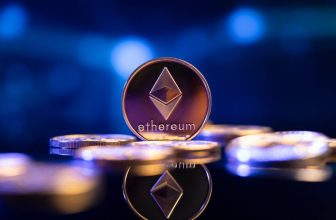In a relatively short space of time, wireless charging has gone from a novelty on smartphones to a feature some people refuse to do without. If you’re still relying on USB power, it might not seem like a big deal. Cables and adapters remain plentiful, and USB is typically the fastest option anyway — some Chinese-made Android devices are charging at 100W or more, enough to go from zero to 100% in 30 to 40 minutes. It’s actually a little irritating that even my iPhone 16 Pro can’t do any better than about 27 to 30W.
Popularity doesn’t necessarily mean something is wise, though — otherwise we’d all be smoking cigarettes. So here’s what you need to know about the safety of wireless charging for your phone, whether you’re using Qi, Qi2, or Apple’s MagSafe technology. The short version is that while there’s no major concern for your health, the longevity of your phone’s battery could be an issue, depending on how and when you choose to charge. A handful of rules may be all that’s necessary for business as usual.
Is wireless phone charging safe in general?
Looking at health concerns
The first thing to address is the radiation that wireless charging emits. While it’s difficult to track down specific studies, this is probably the least of your concerns — any radiation is going to be extremely low beyond the charger’s coil, and non-ionizing regardless. In fact, one of the major goals of device makers is to improve this efficiency even further, since any energy that doesn’t flow directly between charging coils is wasted. There’s a lot more to say on that front, as you’ll see in a moment.
Speaking of industry players, all Qi and Qi2 accessories are certified by the Wireless Power Consortium, formed from a group of over 300 companies including Apple, Samsung, Microsoft, Huawei, and Google. MagSafe products are certified exclusively by Apple — but since Qi2 is designed to be interoperable with the format, I wouldn’t expect much practical difference. Ultimately, both certification efforts are meant to ensure safety and compatibility. Non-certified accessories are likely to charge poorly, if at all, owing to authenticator chips. I’ll leave it up to you to decide whether licensing and certification fees are a motivation as well.
Wireless chargers are inherently less efficient than wired ones, and that waste energy creates heat.
Direct safeguards are also in place. Foreign object detection will block charging if something metal (like a coin) is present, and your phone has sensor systems to prevent any kind of internal overheating or overcharging, whether from a wireless source, USB, or the surrounding air. There’s always the potential of a fire caused by a frayed cable or a defective phone battery — but those issues exist outside the wireless charging sphere as well, and can usually be prevented. If there’s anything to be concerned about, it’s a recent slate of recalls for portable power banks.
That leaves us with general heat emission. Wireless chargers are inherently less efficient than wired ones, and that wasted energy creates heat, which is why some phones and chargers can feel surprisingly hot to the touch when power is flowing. This shouldn’t lead to any fires or skin burns in a functioning product — just discomfort.
Is wireless charging bad for a phone’s battery?
A more complicated question
Possibly, owing to the lithium-ion chemistry most phone batteries rely on. High heat accelerates their degradation. So, while the odds of a fire are slim, the inefficiency of wireless charging could mean that your phone’s maximum capacity will shrink faster than if you relied exclusively on USB.
Strong emphasis on “could.” There are a variety of complicating factors here, including ambient conditions. Sweltering weather intensifies degradation, as does poor ventilation, which traps any heat. Conversely, a cool climate and a breeze might bring things closer to par with USB charging, which is why some products include their own fans.
Notice also that a lot of stands prop your phone in the air — it’s another way of bringing a device closer to room temperature, where lithium-ion batteries tend to be the most comfortable, so to speak. The actual ideal temperature is about 68F (20C).
There are a variety of complicating factors, including ambient conditions and your charging habits.
USB isn’t exactly perfect either. There’s always some heat emission involved in charging, and the higher the wattage, the more heat you can expect. I’d be more concerned about the effects of using something like OnePlus’ 80/100W SuperVOOC USB adapter on a daily basis (assuming I had a compatible phone) than I would turning to a 25W Qi2 stand. Indeed, some people save those ultra-high speed adapters for emergencies only, say if they forget to charge their phone overnight and need to leave for work in 30 minutes.
Habits are extremely important here. Charging only as necessary is better than charging overnight, which in turn is better than charging all day — but as long as you keep your phone relatively cool, even charging overnight shouldn’t cause serious trouble. All smartphones are equipped to switch to trickle charging once they reach 100%, which limits the amount of heat generated. It’s also possible to force iOS and Android to cap charging at 80% until you’re about to wake up, using features called Optimized Battery Charging and Adaptive Charging, respectively. That might not be directly connected to heat, but 80% is the optimum ceiling for prolonging battery health.
What can I do to make wireless charging better?
A few simple tricks
You’ve probably already gleaned some ideas. If you want to stretch out battery health as much as possible, the first step is to create cool conditions around your chargers — keep them out of the sun, and turn a fan on if air conditioning or natural ventilation isn’t enough. If you have a wireless setup in your car, assume you’ll need to leave the AC on when summer rolls around, especially for long road trips. Don’t mount your phone on your windshield, either, if you’re about to drive from Austin to Houston in July.
Consider using lower-wattage products when speed isn’t essential.
If you can’t limit wireless charging to what’s absolutely necessary, be sure to turn on Optimized Battery Charging or Adaptive Charging, which will offset some of the impact. Also, consider using lower-wattage products when speed isn’t essential. A 25W Qi2 charger may be handy, but if you’re charging overnight, a 15 or even 7.5W model will still do the trick. The best long-term charging option is slow-speed USB, though, of course, that can create other complications, such as preventing you from propping up your phone to check it at a glance. USB-based charging stands exist, but they’re not that popular anymore. Mounting your phone in one can be tricky, and most of them won’t let you rotate your screen into a landscape view.
My final verdict is this: don’t worry too much about going wireless. In my own experience, it doesn’t seem to accelerate degradation much, if at all, assuming you follow the tactics I’ve outlined. And as long as you stick to reputable brands, the safety risk should be low to negligible.
Trending Products

Wireless Keyboard and Mouse Combo, ...

Lenovo New 15.6″ Laptop, Inte...

Dell Inspiron 15 3520 15.6″ F...

Acer Nitro KG241Y Sbiip 23.8” Ful...

Wireless Keyboard and Mouse Combo, ...

Zalman i3 NEO ATX Mid Tower Gaming ...

GAMDIAS ATX Mid Tower Gaming Comput...

Sceptre Curved 24-inch Gaming Monit...

Acer SH242Y Ebmihx 23.8″ FHD ...








